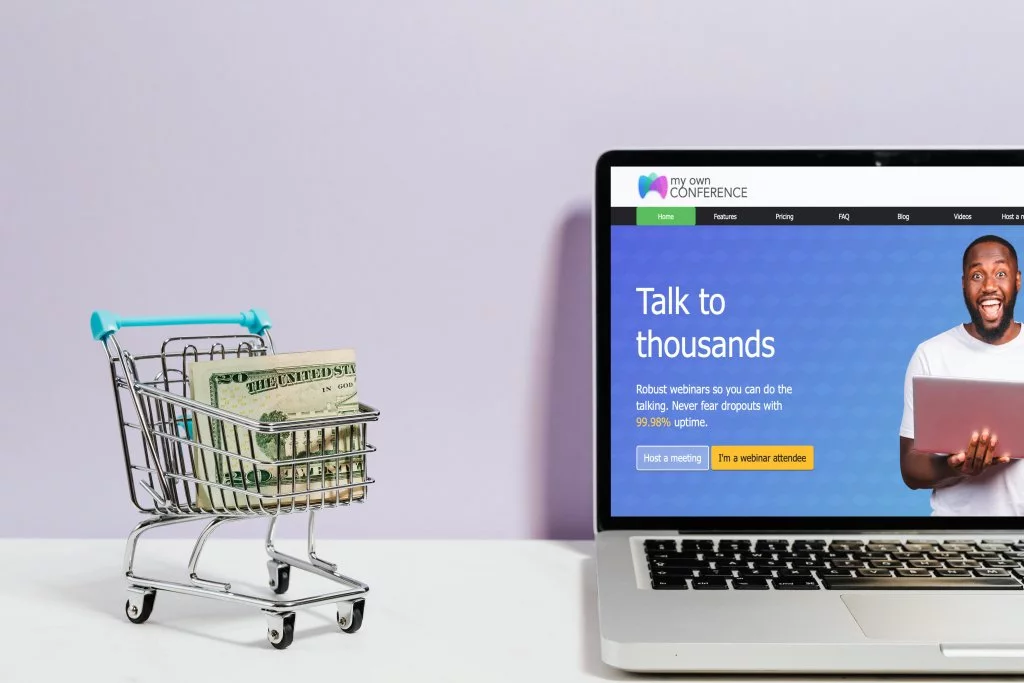
The pandemic made us rethink the way we work. It also made us rethink the way we sell products and services. When in-person opportunities faded, marketers that still wanted an interactive way to share information with their target audiences turned to an old standby—the webinar.
Marketers’ use of webinars is up 11% year over year. Furthermore, more than half plan to incorporate them into their video marketing strategy in 2021, and almost all believe webinars have increased understanding of their product or service.
Incorporate webinars in to eCommerce
From a viewer (customer) perspective, one survey found that 63% of respondents were willing to share contact information to access webinars, making them a particularly effective lead generation tool. And if you think they’re too old-school, you’re wrong. Webinars are rated one of the top five most valuable content formats, along with research/survey reports, white papers, e-books, and case studies.
What makes webinar content memorable enough to warrant a sales call?
Per respondents to the DemandGen 2021 Content Preferences Survey Report, it’s content that:
- Conveys a strong story that resonates with buying committees (55%)
- Is research-based (40%)
- Uses data and research to support claims (52%)
- Is it packed with shareable stats and quick-hitting insights (40%)
- Is it personalized/tailored to their needs (32%)
The people who signed up to watch your webinar are already interested in what you have to say. That’s because webinars are inherently opt-in. They provide the most value to potential customers in the early stage of the buying process when they’re researching solutions to their problems. However, they continue to draw interest during the middle phase as they begin to compare competitors.
How to incorporate webinars into your eCommerce marketing strategy
With all the above in mind, here are four ways you can use webinars in eCommerce to increase brand awareness and build your sales pipeline.
Teach
Instead of a how-to video, consider doing a how-to webinar. Videos are great teaching tools, but they’re not interactive. With a webinar, viewers can interact with the host, asking questions and getting clarification when need be. Viewers can also crowdsource wisdom on the subject and learn from the other participants.
Be thoughtful when choosing your host. You want someone who is:
- Engaging
- Comfortable interacting with others
- Comes across as a subject-matter expert
- Has enough knowledge to answer most questions
- Confident enough to say, “I don’t know. I’ll get back to you on that.”
Credibility, authenticity, and approachability are essential to your brand.
6 Microlearning Rules Every Online Training Developer Must Follow
Launch
Webinars work well as part of the eCommerce marketing package for introducing new products and services. They allow you to go into more detail than a video. Viewer expectations and tolerance for length are different — 30 minutes for webinars vs 30 seconds for videos.
Webinars also add a personal touch, putting a face on your brand via the host. Of course, your webinars should employ a script. And the best webinar hosts come across as knowledgeable brand ambassadors who believe in and are comfortable with your product or service. They also need to be ready to have a conversation with the audience. Plus, the interactive quality of webinars enables you to break up the “present-to” flow with quick surveys and Q&A sessions.
Read also: How to Host an Impromptu Webinar or Go Live In 30 Seconds.
Humanize
Whether you make food or fuzzball removers, people want to know how your products are designed, sourced, manufactured, and delivered. They also like to see real people who’ve successfully used the product or service you’re offering.
Introducing potential customers to your organization’s people, processes, and customers behind the scenes humanizes your brand. Furthermore, it projects confidence and trustworthiness by using a “show, don’t tell” approach.
Webinars make it easy and economical to shift from one topic, location, person, or group of people to the next as you tell your story. Doing so with video can be time-consuming and cost-prohibitive.
Detail
With webinars, you also have the opportunity to linger on any topic you believe requires a moment to absorb detail. For example, if there is data that backs up a claim, display it onscreen. Your webinar host may either walk viewers through the numbers or give them a few seconds to do so themselves.
The same principle applies to displaying the following:
- Specs and schematics
- Product views from various angles
- Product/service features and benefits
- Competitive comparisons
The host controls webinar pacing. They can introduce numbers and statistics in a way that doesn’t make them seem like dead air.
Displaying vital information onscreen also opens up space for audience questions in real-time, rather than waiting until the end.
And be sure to match audience size to intend. Although webinars can accommodate hundreds of people, you may prefer something much smaller if you want meaningful interaction with attendees.

When to publish your webinars
Posting it after the live session is vital for any webinar. You also need to publish any associated materials at the same time. Not everyone who signs up will attend, and not everyone interested in the subject will receive an invitation.
How long should your published webinars be?
There are some interesting differences between how long viewers stay engaged with live webinars vs how long they do with on-demand versions. Attendees are comfortable spending up to an hour with live webinars.
However, those viewing webinars on-demand aren’t so generous. They engage for 15 — 20 minutes on average4.
To accommodate both preferences, you can live stream the initial webinar and then post a series of bite-sized “chapters” of the full-length webinar online. If you choose the latter, include relevant contact information, URLs, and suggestions for further viewing/reading at the back end of each segment for people who don’t view the last one in the series.
Make your webinars mobile-friendly
About 73% of all online orders will be made via a mobile device in 2021. So it makes sense to make it easy to view your webinars on a tablet and smartphone. Remember to make signing up for the webinar super simple, too—no one likes to fumble around filling out a long form on their phone. If you’re gating the webinar, get the bare minimum of information you need for a sales contact. Usually, your name and email will suffice.
Final thoughts on eCommerce webinars
Webinars are a cost-effective way to help you build your brand and entice people further into the sales funnel. They’re advantageous for eCommerce businesses that do 100% of their sales online; without a brick-and-mortar store, building a brand presence online that people find engaging and credible can be challenging. Almost two-thirds of video marketers have integrated webinars into their marketing efforts. Almost all (91%) agree that their webinars have succeeded. Thus, it’s safe to say that webinars are a valuable tactic for eCommerce marketing in 2021.
Check out our webinar software platform, and you can sign in for a free trial and test our software.

Ray Ko is the senior e-commerce manager at ShopPOPDisplays, a top manufacturer of point-of-purchase retail displays based in New Jersey. With over 20 years of experience in branding, content, and search engine marketing, Ray is skilled at developing and executing e-commerce strategies that boost site traffic, enhance user engagement, and increase revenue.











